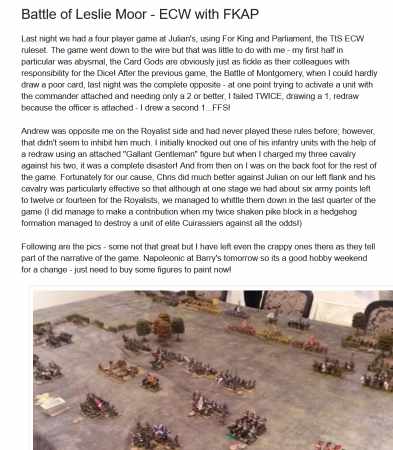
Using some old Langton rigging thread, the process starts by cutting a couple 2" lengths.
The foremast is glued in its hole (after test-fitting, of course). I usually start at the foremast and work my way back. Also note in this picture that gold has been added along the bulwarks, and the laurel wreaths that outline the upper gun ports have been picked out in the same color.

When rigging, I work with a dab of superglue (on a penny) and a long pin, the latter used for applying the glue.
Here, one of the first lines (stays) has been added. All I do is put a dab of glue at the place where the line starts, then press the line into the glue. Then after a couple seconds, a dab of glue on the terminus, and I stretch the line to that point and drop it into the glue. It should dry in seconds. Clip, cut or razor off excess after a couple of minutes.
If you clip it off too soon, and the glue has not taken, you will never get the line taught again.
I have become fairly deft with a narrow, sharp pair of tweezers. These speed things up quite a bit, and will become almost essential when the ship is more fully rigged.
Repeat this process with the main and mizzen masts, and their respective stays.

Several of the lines are now in place.
Care must be taken in pulling new lines, such that the tension on the new line does not pull the mast forward, loosening your previously laid lines. A bit of that has happened here.

Several steps are involved in preparing each sail for hanging. First, cut one sail at a time from the fret, and perform all the following sail-related steps before moving on to the next. Work from the bottom of the mast upwards. Curl the lower edges very slightly under, horizontally.

Next, roll the sail gently over a paintbrush (or similar round object) to simulate billowing. Most of the billow should be evident toward the lower portion of the sail.

Then twist the two lug rings at the lower corners of the sail 90 degrees, and open them at the bottom with a razor knife. These will interlock with the yard or sail below.

Finally, bend the two prongs at the top of the sail about 90 degrees, so they point backwards from the sail. These are used to clip the sail to the mast.

Here, the first brass sail is installed on the foremast, using a dab of superglue touched to the prongs. Note how the lower corners sit on the yard below.

Both sails are now attached.

The process is repeated for the main and mizzen masts.
The lateen mizzen-sail is a two-piece affair. Snip it from the fret, bend the two halves over on themselves, and put a dab of superglue in-between. After a minute or so, roll the sail over the bezel of a paintbrush to form its billowed shape.
The lateen is installed with the bottom of the sail parallel to the ship's deck, about 2-3mm above the deck. If you are placing your sails so they are slightly turned - as if the ship is sailing on a reach - the lower front tip of the lateen should point slightly toward the side of the ship where the yards are furthest forward, and the lateen's billow should be in the same direction as the rest of the sails.
Be careful not to put too much billow into the lateen, as excessive billow will interfere with later placement of the ratlines.

These are some of the brand-new ratlines available from Langton as an add-on to the kit. They are semi-generic, in that they come in several sizes, but are not exactly specific to a given model. They must be trimmed to fit.
Like everything, I soak these in soapy water. When they are dry, prime (with Wal-Mart primer, in my case) - and then when dry, spray with a matte black paint. It is probably better to spray than brush, as the essence in the work is avoiding unnecessary thickening of the lines.

Once dry, after test-fitting, the ratlines are tweezered into place with a dab of superglue at the top, and another dab wiped along the channel on which the ratline will sit. Cut and place one ratline at a time, so as not to get them confused or mixed up. Proper placement of the ratlines is as follows:
- For lower masts, the top of the ratline is tucked directly into the angle between the mast and the bottom of the fighting top. The ratline should sit snuggly in that angle. The bottom of the ratline should sit flush on the side of the channel, rather than sit on top of it. Trim the ratlines as needed, from the top rather than the bottom. The bottom includes representative detail for the shroud chains, which should not be removed. It may be necessary to "kink" the ratlines inward on ships where the channels are very low. If so, the kink should be right at the top of the bulwark.
- For upper masts and the spritmast, the bottom of the ratline should stand on the fighting top, roughly ½ of the way between the outside of the fighting top and the mast. No part of the bottom of the ratline should extend over the edge of the fighting top, as in real life the ratlines actually descended into the fighting top. The top of the upper ratlines should be trimmed so that they tuck into the slight angle below the lowest part of the truck.








